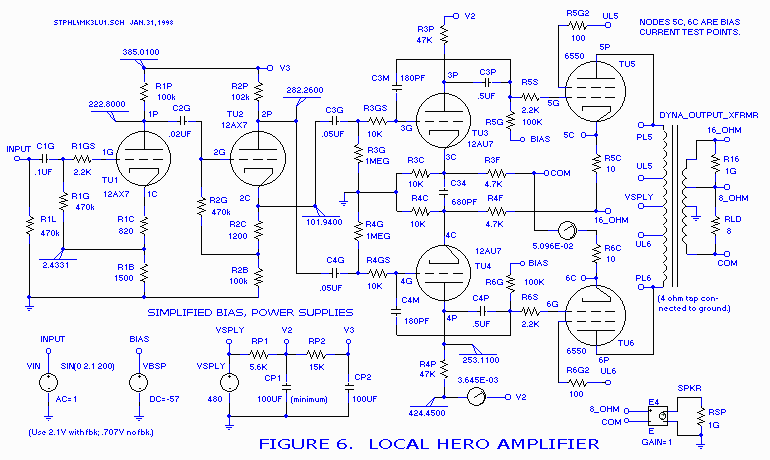
Figure 6. The "Local Hero" amplifier: a modified Dynaco Mark III.
Feedback and fidelity part 2
by Norman Koren
Updated Oct. 9, 2006 (last update December 8, 2003)
.Negative feedback can be a wonderful thing when done well,
but it's often done badly. Here's how to use it properly.
In part 1 we discussed negative feedback concepts and applied them to preamplifiers.
The power amplifier of fig. 6 is an excellent platform for studying the effects of feedback on clipping. It can be built as a modified Dynaco Mark 3, or from scratch with a 4300 ohm primary impedance output transformer. Due to the limitations of the evaluation version of PSpice, simplified bias and power supplies have been shown. I have named this amplifier the "Local Hero" because of its use of local feedback (and also after one of my favorite movies.). Since it has outstanding sound quality and makes exemplary use of feedback, we shall describe its circuit in some detail.

The Local Hero’s chief feature is the absence of global negative feedback from the output transformer secondary to the input stage. Instead, balanced feedback from the output is returned to the cathodes of the driver (TU3, TU4) and output tubes (TU5, TU6). This eliminates many of the stability problems associated with a large global loop: The fewer stages in the loop, the easier it is to control phase shifts at both frequency extremes. The amount of feedback on the drivers is controlled by voltage dividers (R3F, R3C) and (R4F, R4C). The resistance ratios may be changed to alter the amount of feedback, but if they are, the parallel resistance between the driver cathodes (nodes 3C and 4C) and ground should remain around 3300 ohms. The loop is compensated with capacitors C3M and C4M, with C34 added to extend the high frequency response. (These capacitors have the same functions as C3M and C3C in fig. 2.) They do not transmit RF interference from the output. The effects of RF interference are further reduced because the signal at the drivers is much greater than at the input. RLD and R16 are for simulation only-- they aren't physically present. RLD represents the speaker load. R16 prevents an unconnected node error. Stability is excellent: Even a 1 microfarad capacitor in shunt with the load results in little ringing.
The input stage (TU1) uses local current feedback: Gain can be controlled
by adjusting R1B. It is ac-coupled to a split-load phase invertor (TU2),
which also has local current feedback. The split-load phase invertor is
an excellent performer when it doesn’t have to drive output tubes, as it
does in the classic Dynaco circuits. Ac-coupling allows the plate resistors
to be chosen for equal but opposite ac current in TU1 and TU2, so that
no net ac current is drawn from the power supply. This reduces sonic degradation
from power supply electrolytic capacitors, which are notoriously nonlinear.
The original Williamson circuit (the grandfather of the Local Hero) had
to be dc-coupled because there were already too many coupling capacitors
in the global feedback loop; another would have undermined the low frequency
stability. Ac-coupling also increases the phase invertor’s maximum output.
A note for experimenters: If you build this circuit, you may need to make
fine adjustments on C3M and C4M, and possibly also C34, for flat response
and good stability.
| Note: I
haven't actually built the Local Hero, but I've gotten inquiries. I haven't
included the power supply design. Power supplies for this type of amplifier
are pretty standard. The Hammond
372JX (300-0-300V, 250 mA) and 373BX (350-0-350V, 175 mA) are good power
transformer choices if you're building Local Hero as monoblocks. The 372JX
is more conservative, but the 373BX will should put out about 30% more
power (you'll need 500V power supply capacitors).
If you build it, I recommend testing it by driving it with a square wave generator, loading it with a typical loudspeaker load (with cables), and looking at the signal at the output (and speakers) with an oscilloscope. If there is ringing, increase the Miller capacitors, C3M and C4M. If the square waves seem excessively rounded, you may be able to decrease C3M and C4M with no ill effects. The voltage at test points 5C and 6C should be approximately 0.5 V for 50 mA bias current (per tube). Remember to be careful of high voltages when you work inside tube amplifiers! |
A pleasant surprise! Jorn Loe of Norway built a Local Hero. It took him
a long time (he isn't experienced at building tube amplifiers), but
it's working and sounding fine. You can reach him at n (dot) craft (at) c2i (dot) net.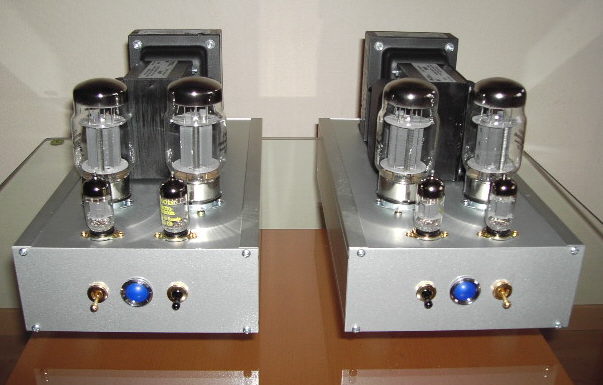 A comment from Jorn, Oct. 8, 2006: I did a
small correction in the Local Hero after oscilloscope measurements showed some oscillation. My layout made the
C3M and C4M paths too long. When I connected C3M and C4M directly to
anodes 3P and 4P the amplifiers went silent. I talked to other
tube builders, and they said that this was a good change. (Sounds fine to me. —NLK) |
The results of driving the amplifier into saturation are shown in figures 7 (without feedback) and 8 (with feedback). Since the gain with an 8 ohm load is 9.46dB lower (a factor of 0.3365) with feedback than without it, the input signals have been adjusted for the same degree of saturation. The actual amount of feedback is the difference in gain without the load: 15.4dB. This is a moderate amount: much more than most single-ended tube amplifiers, slightly less than classic push-pull tube amplifiers, and much less than mid-fi solid-state amplifiers.
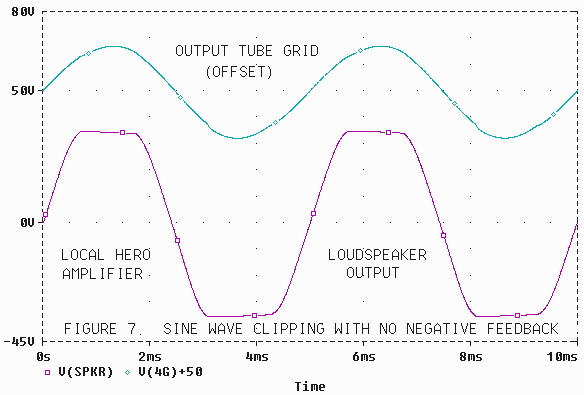
Fig. 7. Sine wave clipping with no negative feedback.
When feedback is applied, clipping at the amplifier output ( lower curve, fig. 8) becomes more severe: its onset becomes more abrupt and the tops and bottoms of the waveforms become flatter. Since no signal is fed back during clipping, voltage spikes appear at the grid of the output tubes (upper curve, fig. 8). The difference between figures 7 and 8 is modest because only 15.4 dB of feedback has been employed: Had more been applied to emphasize the effects of clipping, the sound quality would have suffered, and the Local Hero would not have been such a good example of proper use of feedback. In a mid-fi solid-state amplifier, with 40 dB or more feedback, the tops and bottoms would have been cleanly chopped off.
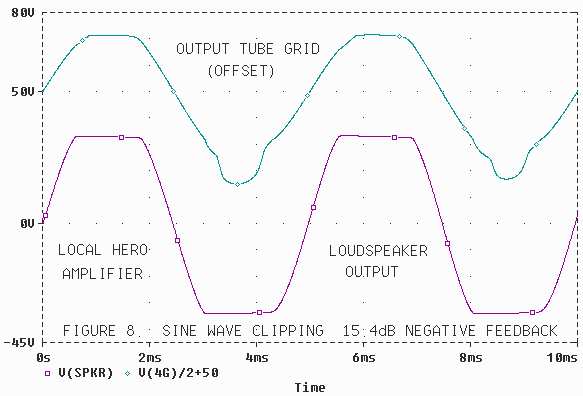
Fig. 8. Sine wave clipping with 15.4 dB negative feedback.
Hard clipping is the direct cause of the constricted dynamics and much of the sonic harshness attributed to feedback. The audible degradation can only be determined by ear: there is no hard and fixed rule, but much can be learned by correlating SPICE results with careful listening. Sonic degradation is a strong function of amplifier power and loudspeaker efficiency: the higher the sound pressure level at the onset of clipping, the less offensive it will be. That, along with the stability/frequency response issue described above, is the reason that low powered SE amplifiers have limited tolerance for feedback.
Clipping is rarely a problem in preamplifiers. The figure 2 preamplifier has enough headroom to drive any commercial power amplifier well beyond saturation— 10 to 30 dB, depending on its sensitivity and input impedance.
Despite its drawbacks in power amplifiers, negative feedback offers one significant advantage: It reduces the output impedance. High output impedance can cause irregular frequency response under realistic loudspeaker loads [8] as well as poor woofer damping, audible as mushy ill-defined bass. The optimum output impedance and feedback level depends on a number of factors that ultimately reduce to a tradeoff between mushy bass at one extreme (no feedback) and harsh clipping at the other (too much feedback). Several aspects of this tradeoff are discussed in the sidebar.
Despite negative feedback’s disadvantages in single-ended tube power amplifiers, two local experimenters have chosen to use a small amount of it— around 3 to 4dB. Without it, the bass was just too sloppy. They did not take this step lightly: They listened extensively, perhaps obsessively, before adding feedback, and they wouldn't have done so had they duplicated Martin Colloms’ observation, made on the Cary 805C, that even the smallest amount of feedback compromises musicality.
I can only speculate on the reasons for this discrepancy. At first I thought the sound pressure level at the onset of clipping would be slightly higher for the experimenter’s systems, which use Svetlana SV811-10 output tubes operated in class A2, driving loudspeakers with 93 and 96dB efficiency in rather small rooms. But the clipping level of the Cary 805C driving the 93 dB efficient Wilson WITT should be at least as high. Perhaps the discrepancy can be explained by differences in the room size and acoustics, amplifier clipping signature, or loudspeaker damping requirements. But there is another intriguing possibility.
Since I don’t have access to the Cary 805C’s schematic diagram, I can only speculate that when feedback is switched on, the traditional compensation technique— a capacitor in shunt with the feedback resistor— may be employed. If this is so, then all the RF picked up from the speaker cables will be transmitted back to the input stage, even for the smallest amount of feedback, but none will be transmitted if there is no feedback. This could well explain Martin Colloms’ observation.
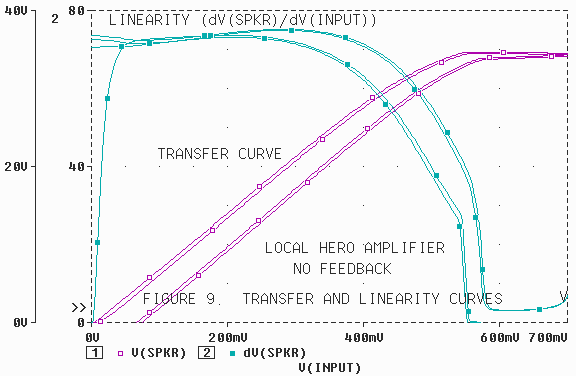
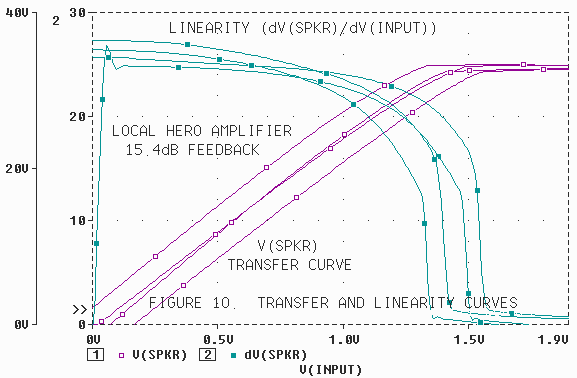
Fig. 10. Transfer and linearity curves with 15.4dB negative feedback.
The transfer curve is simply the output voltage, V(SPKR), as a function of the input voltage. For small input signals, it rises along a relatively straight line. As it approaches saturation, it deviates from the straight line to a greater or lesser degree, depending on how well the circuit is linearized. At saturation, it flattens out. Since it can be difficult to see the deviation from the straight line, we introduce the linearity curve.
The linearity curve is the slope, or rate of change, of the transfer curve. In the language of differential calculus, it is the derivative of the output voltage with respect to the input, dV(SPKR)/dV(INPUT). For small input signals, it is a relatively straight horizontal line whose value equals the gain of the amplifier. As it approaches saturation, it starts to drop. This drop is much more visible than the corresponding change in the slope of the transfer curve. At saturation, it drops to zero.
We must now explain the multiple traces in the transfer and linearity curves. To obtain these curves, we drive the output tubes (via computer simulation, of course) into hard saturation— hard enough to drive the voltage on the grid of output tube positive with respect to the cathode for a portion of the cycle. This causes grid current to be drawn, alternately charging coupling capacitors C3P and C4P. These capacitors can charge quite rapidly, but their discharge is governed by the RC time constant that includes the grid resistor: C4P´R6G or C3P´R5G = 0.05 seconds, corresponding to a -3dB frequency of 3.2Hz. Since the simulation starts with no signal, and hence no charge, the charge that accumulates whenever one of the output tube grids conducts causes the multiple traces.
This is no mere artifact of SPICE simulation: It is a real effect in any amplifier where the grids of the output tubes are capacitively coupled. In hard saturation, continuous waveforms behave very differently from a single transient pulse: They can build enough charge across the coupling capacitors to drive the output tubes deep into cutoff. This leads to an overload recovery time, governed by the above-mentioned RC time constant, that can be quite audible. Overload recovery is eliminated in class A2 or AB2 amplifiers, where the output tube drivers can source grid current. This can be accomplished either with transformer-coupling or dc-coupled cathode followers [7], either of which are costly. An additional advantage of class A2 or AB2 power amplifiers is that they can put out much more power when the output stage is triode-connected.
Now, back to the transfer and linearity curves. Fourier analysis tells us that signals on straight line portions of the curves have no appreciable distortion. Signals on portions of the curves with sharp kinks or abrupt changes generate lots of high order harmonic distortion. Depending on your viewpoint, either the kinks or the high-order harmonics are the source of sonic degradation. Signals on portions of the curves with gradual curvature or gentle rounding generate mostly low (second and third) order harmonic distortion.
In a circuit with high linearity— the result of large amounts of negative feedback— the transfer curve is a straight line up to saturation, where is abruptly levels off. The linearity curve is a horizontal line up to saturation, where it "hits a brick wall" and abruptly drops to zero. There will be very little harmonic distortion below saturation, but as soon as the amplifier saturates, serious high-order harmonic distortion is generated.
Amplifiers are traditionally specified for total harmonic distortion at the rated power, typically around 1dB below saturation (roughly 90% of saturation voltage or 80% of saturation power). The difference between the rated power and the saturation level is the "headroom." An amplifier with relatively soft clipping, such as the Local Hero without feedback (fig. 9), must start rounding off the signal at amplitudes well below saturation. At the rated power therefore, it can have considerable THD, but this distortion is mostly low order (second and third) harmonics. At power levels above saturation, high order harmonic distortion components will remain much lower than for a highly linear amplifier.
The problem of hard clipping is not limited to feedback amplifiers. I once had an amplifier— obtained in a trade, without careful auditioning— that featured a circuit called "super-feedforward," intended to eliminate the vices of feedback. It put out 120 watts per channel at 0.005% THD (one of the lowest in the 1980 Audio Annual Equipment Directory), had response to 250kHz, and had sound that can only be described as hateful and irritating, even though it had no obvious flaws. The only suspicious measurement was the saturated sine waves: They didn’t just clip; they dipped! I didn’t keep the amplifier long enough to find out why.
Modest levels of low order harmonic distortion do not seem to harm sound quality. In SE tube amplifiers, most of which have little or no feedback, the predominant distortion component is the second harmonic. Push-pull amplifiers cancel even order harmonic distortion components, resulting in lower THD. The second harmonic distortion in SE amplifiers may well be responsible for their alluring sound. It has given rise to the theory that even order harmonic distortion components are more benign than odd. My own view is that the real culprit is high order distortion components. Second harmonic distortion may actually enhance sound quality by adding harmonic content— some call it "euphonic distortion"— that increases the perception of richness and detail. In all fairness, I haven’t persuaded my experimenter friends that this is the case.
In the 1950s and early 1960s, high fidelity tube amplifiers had 0.5 to 1.5% THD at rated power output. In the 1970s, a distortion race took place that paralleled the automotive horsepower race of the 1950s: If 1% THD was OK, 0.1% was better, and 0.001% would be really awesome. The more leading zeros, the merrier. These low THD levels were primarily accomplished by increasing negative feedback to levels well beyond 40dB. We all know the results: amplifiers that sounded so bad that— a real silver lining on a dark cloud — they gave birth to the high-end audio industry we know today.
That brings us to the ultimate audio paradox: In a well-designed high fidelity power amplifier, the lower the total harmonic distortion at rated power, the harder the clipping; hence the worse the sound. This runs exactly counter to the popular belief of the past, a belief still widely held in segments of the audio industry outside the high-end. Within the high-end community, the predominant belief has been that THD has little to do with sound quality, even though most of us have experienced evidence of the inverse correlation: mid-fi amplifiers with low THD but mediocre sound and old tube amplifiers much higher THD but wonderful sound.
To minimize the likelihood of misunderstanding— inevitable when the above statement is quoted out of context— let me emphasize that the power amplifier must have no serious design flaws (like low-level crossover distortion) and must be working properly. Extremely high levels of THD, over 5 or 10%, probably indicate trouble. Low harmonic distortion is still desirable in preamplifiers and line level amplifiers that have at least 10dB of headroom (a factor of ten in power) between their rated output and saturation. Low harmonic distortion at rated output only degrades the sound quality of power amplifiers.
The transfer and linearity curves (figures 9 and 10) are more direct indicators of audio quality and saturation behavior. The transfer curve is easy to obtain on any oscilloscope with X-Y input capability. The linearity curve is trickier because it involves differentiating the output voltage with respect to the input. This requires a digital oscilloscope. A number of issues need to be resolved before this measurement becomes a standard: How far should the amplifier be overdriven? What is the ideal waveform for this measurement? We chose a 200Hz sine wave because, with a 1kHz sine wave, the amplifier’s high frequency limitations smoothed the curves. Would a 100Hz sine wave or a single sawtooth pulse have been any better? It would be worthwhile to publish these curves in equipment reviews, even before a standard is established, to see what can be learned.
Measurements made inside the circuit, examples of which are found in figures 3-5, have great value for the equipment designer, but little value for the reviewer because different amplifiers have such different circuit topologies. There is a real need for measurements that indicate sensitivity to RF interference. Paul Miller made a good first step by inserting noise-modulated RF signals into amplifiers and measuring the audible noise spectrum [5], but his descriptions were incomplete, and I am unaware of any follow-up work.
In a plate-follower triode gain stage, as the grid voltage (the input signal) increases, the plate current increases. This causes the plate voltage (the output signal) to drop. Since the plate current depends on the plate voltage, it will be lower than it would have been had the plate voltage remained constant. This, by definition, is degenerative, i.e., negative feedback: It could be eliminated by making the plate current independent of the plate voltage. This could be done inside the tube by adding a second grid, connected to a constant high voltage, between the control grid and plate. To keep the electrons that bounce off the plate and getting absorbed by the second grid, a third grid, connected to a low voltage, would have to be added between the second grid and the plate.
What would such a tube be called? A pentode, of course! With no negative feedback, its gain and output impedance are much higher and its linearity is poorer. The sound of the triode is almost universally preferred. Considered in this light, feedback shouldn’t look so bad. For a tube amplifier to be called truly feedback-free— in the local as well as the global sense— it would have to be built entirely of pentodes. Any takers?
The use of computer simulation to study subjective sound quality is still in its infancy. As it progresses, amplifier designs will become simpler, more elegant, and better sounding. Best of all, amateurs are now in a position to make real contributions to the art, much as they did in the early days of radio. Some excellent simulation tools are available for free, including the evaluation version of PSpice from MicroSim, and Duncan Munro’s excellent web page, http://duncanamps.simplenet.com/. Relevant articles appear in Glass Audio and Audio Electronics.
Extensive computer simulation and listening have led me to conclude that feedback amplifiers can have flawless sound quality, without a trace of muddiness or grayness, provided that the three dangers of feedback— instability, RF susceptibility, and sharpened clipping— can be eliminated or minimized. This can be always be accomplished in well-designed vacuum tube preamplifiers, but there will always be a tradeoff between clipping and output impedance in power amplifiers. Because this tradeoff involves many factors— amplifier saturation level, open loop output impedance, loudspeaker efficiency and damping, etc. — one solution will never fit all needs. The industry-wide trend towards lower negative feedback may well continue, but I will hazard the guess that it won’t go all the way to zero.
Although I cannot prove that feedback has no audible drawbacks— no such proof is possible when the issue is subjective quality— I can offer the fig. 2 preamplifier line stage as evidence. When implemented with a high quality power supply, its superb sound should equal anything on the market, with or without feedback. Details of its construction (as a modified Dynaco PAS) have been published in Glass Audio [4]. The entire project, which includes a moving magnet phono stage, can be built for around $300 in parts.
In high fidelity amplifiers, the magic is in the circuit. Premium components
and skilled layout may improve the sound of a good circuit, but they cannot
save a poor one. With the knowledge gained by correlating SPICE simulations
with careful listening, we can confidently apply the right amounts feedback
to the right places— sparingly in power amplifiers, more generously in
preamplifiers— without fear of degrading the sound. Advertising claims
of "no negative feedback" should be treated with the usual skepticism.
A well-designed amplifier can have excellent sound whether or not it has
feedback. The ultimate judge of audio quality is, and always will be, the
ear.
|
In a power amplifier with pentode output tubes (6L6GC, EL34, 6550, etc.), output impedance and power depend on the screen grid connection. The three standard connections are:
Power output is measured at clipping for 50mA bias current per tube and a 480V power supply. Normal rated power output is about 20% lower. The UL connection is popular in classic designs because it offers a good tradeoff between output power and impedance. Changing an amplifier from UL to triode mode is a common modification. Triode mode has lower output impedance, less sensitivity to loudspeaker loads, and less feedback (hence softer clipping) if the circuit is unchanged, but also lower power. If the Local Hero is wired in triode mode, reduce C3M and C4M to 150pF. A class A2 or AB2 triode output stage [7], which can operate with grid current, would have much greater output power. It's the best of both worlds, but it comes at a price: The output stage grid must be driven by a transformer-coupled gain stage (limited bandwidth and don’t even think of feedback) or by direct-coupled cathode followers, which greatly complicates the power supply. This has been accomplished in The Emperor's New Amplifier. |
||||||||||||||||||||||||||||||||||||||||||||
|
December 8, 2003 |
Images and text copyright (C) 2000-2012 by Norman Koren. Norman Koren lives in Boulder, Colorado. Since 2003 most of his time has been devoted to the development of Imatest. He has been involved with photography since 1964. Designing vacuum tube audio amplifiers was his passion between about 1990 to 1998. |
 |